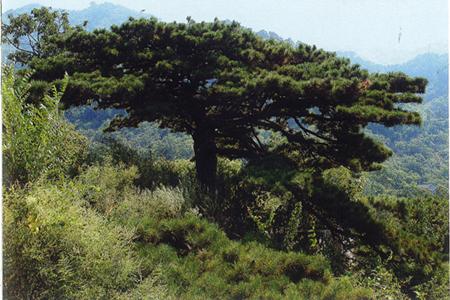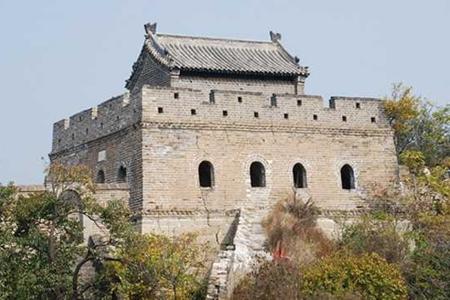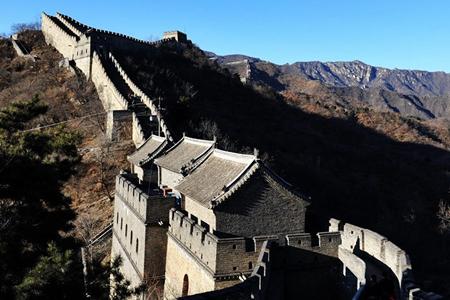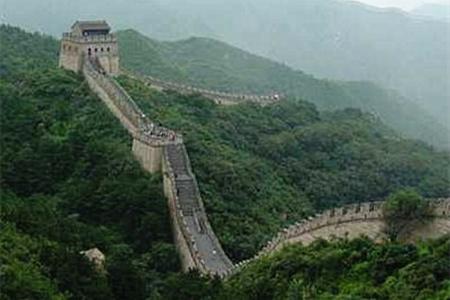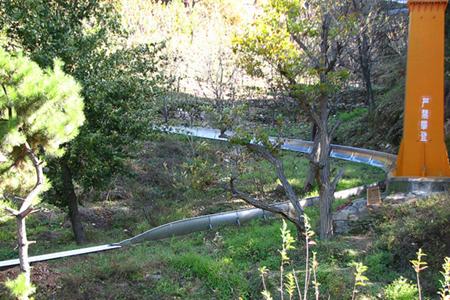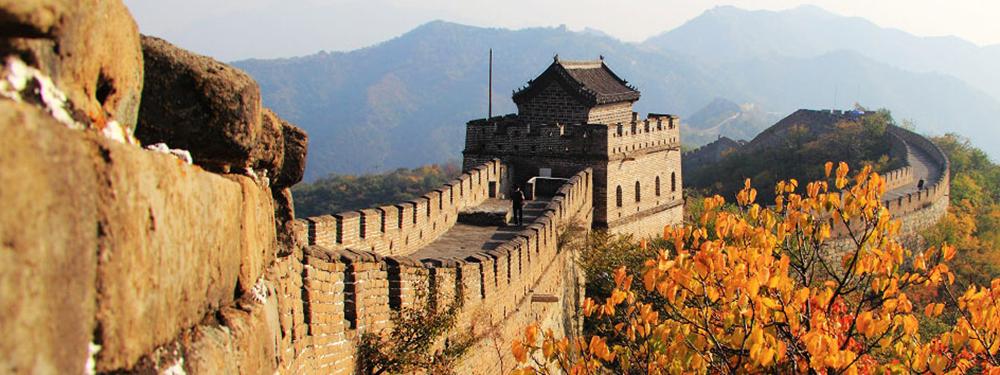
慕田峪长城
想去(905)
去过(587)
-
景区级别:AAAAA级
-
景区地址:北京市怀柔区渤海镇慕田峪村
-
开放时间:07:30~17:30
-
游览时间:4-5小时
-
最佳旅游时间:四季皆宜
-
门票信息:成人45元,学生25元
-
游玩提示:法定节假日拥挤
×
查询结果
慕田峪长城设有国内一流的登城缆车、开发了中华梦石城、施必得滑道等项目,形成了长城文化、石文化和体育健身娱乐有机结合。英国前首相梅杰,美国前总统克林顿等多位外国首脑到慕田峪游览。慕田峪长城1987年被评为新北京十六景之一,1992年被评为北京旅游世界之最。
慕田峪长城是北京著名长城景点之一,是明朝万里长城的精华所在。慕田峪长城的构筑有着独特的风格,这里敌楼密集,关隘险要,长城两侧均有垛口。慕田峪长城旅游区群山环抱,风景秀丽。春季,群芳争妍,山花烂漫;夏季,满山青翠,流水潺潺;秋季,红叶漫山,果实累累;冬季,白雪皑皑,银装素裹,一派北国风光,在中外享有“万里长城慕田峪独秀”的美誉。
慕田峪长城旅游景区,历史悠久,文化灿烂,在北京乃至全国有一定的知名度和影响力。尤其是2008年奥运会后,知名度和美誉度在世界上得到了有效的提升。万里长城慕田峪段的建筑构造具有独特风格,是万里长城的精华所在。三座敌楼并矗一台的正关台,为长城之罕见。西北面有俗称“牛犄角边”、“箭扣”及“鹰飞倒仰”等长城景观结点,其势险峻峥嵘,起伏连绵,如巨龙飞腾。
[Introduction to The Great Wall at Mutianyu]
Despite the hundreds of buses that visit daily, the Great Wall at Mutianyu is not as crowded as the nearby Badaling or Juyongguan sections of the Wall. Mutianyu's 2.5 kilometer stretch of the Wall allows you to walk for more than an hour as you explore 22 watchtowers and the valley on both sides of the Wall. During the late afternoon, or in poor weather, you often might find yourself alone with only the sound of the wind to keep you company. Travel back in time and see the Wall as it was when it was built hundreds of years ago.
The wall was first built in the Northern Qi Dynasty (550-557). In the Ming Dynasty (1368-1644), Tan Lun and Qi Jiguang, two famous patriotic generals, rebuilt it in order to strengthen its defensive potential when they guarded the strategic pass. It served as the northern protective screen, guarding the capital and imperial mausoleums for generations. Reconstruction began in 1568 on 1000km of the Wall including Mutianyu. Responsibility was given to Qi Jiguang, a general who had built his credentials fighting Japanese pirates, and who took his responsibilities as a builder very seriously. Construction continued for many years, as the fortifications were built up with solid granite blocks, and included the construction of some of the larger defensive towers.
There are 22 watch towers distributed at close intervals along the wall. They are located not only in the main wall but also at the distinctive "branch cities". Branch cities are built on the hill ridge against the inner or outer side of the wall. They measure from several yards to dozens of yards across. On the northwest over 3,281-feet hills, lies a section of the wall called "Ox Horn Edge". On the steep and lofty peaks, there are two walls named "Flying Eagle Flies Facing Upward" and "Arrow Lock". What is more rarely seen on the southeast side is a general gateway platform guarded by three watch towers together. In locations of strategic importance, batteries are set up to reinforce the defense capabilities.
[Tips]
Admission:45 RMB
Opening Hours:Peak Season: 7:30-17:30 Off season: 7:30-17:30
Phone:+86-10-61626505
Best Time to Visit:April to October
Recommended Time for a Visit:4 Hours
[Features]
Built mainly from granite, the pass at Mutianyu is an appropriately unique section of the Great Wall. 7 to 8 meters high, and 4 to 5 meters high with crenellations on both sides of the Wall, the section of the Wall at Mutianyu stretches for over 2 kilometers. Matching its military importance, the Mutianyu Great Wall has 22 watchtowers built at almost 100 meter intervals. This number of towers is much more than would be expected along the Wall, and is also highlighted by the particular form and structure unique to this section. The Zheng Guan Tai gate stands with three connected watchtowers, with the center tower rising above the flanking structures. While each tower has its own gate, the main watchtower gate is on the east side of the building, which is quite unusual. Other unique features in this section include the "Tail Wall" which stretches out perpendicular to the Wall along a ridgeline for stronger defensive positioning, and another perpendicular extension on the other side of the Wall. Invading nomads would use the ridgelines as they marched, to avoid being caught unawares in the brambles and trees below, and the positioning of the Great Wall along the ridgeline and these adjoining tail walls are recognition of the importance of this high ground.
[Address]
Mutianyu Village,Bohai Town,Huairou District,Beijing
-
迎宾松
迎宾松位于旅游区主车场西南约200米公路东侧,树龄300余年,主干高近2米,直径约0.7米,枝繁叶茂,气势峥嵘,树冠若一把巨伞,上托青天,下遮大地。因它长势往公路方向倾斜,两枝杈又格外秀长,似躬身低头,伸手迎接游客,故被美名为“迎宾松”。
-
大角楼
大角楼位于慕田峪关东侧的制高点,是慕田峪长城著名景观之一。大角楼之所以称为大角楼,是因为此楼三面有长城,一条向西与八达岭相连。一条向东与古北口相连。一条向南,为内支城,因从长城任何一个角度看,都似一个城角,故名大角楼。
-
正关台
正关台是慕田峪关的别称。正关台由三座敌楼并立,为长城建筑史上罕见。此关建于公元1404年(明永乐二年),战略地位十分重要,一边是塞外匈奴驻地,一边是入京通道,一边又是进入皇陵的捷径。慕田峪关长40米,宽30米,高20米。
-
箭扣长城
箭扣长城位于京郊怀柔县西北八道河乡境内,距怀柔县城约30公里,山势非常富于变化,险峰断崖之上的长城也显得更加雄奇险要。箭扣长城是明代万里长城最著名的险段之一,是近年来各种长城画册中上镜率最高的一段,向来是长城摄影的热点。
-
长城滑道
慕田峪长城滑道,俗称“旱地雪橇”,是一种集体育和娱乐为一体的交通工具。全长1580米,最高时速可达30千米/小时。滑道是德国威岗公司生产的不锈钢槽式滑道,全长 1580 米,是一种新兴的集体育和娱乐为一体的交通工具,俗名旱地雪橇。


